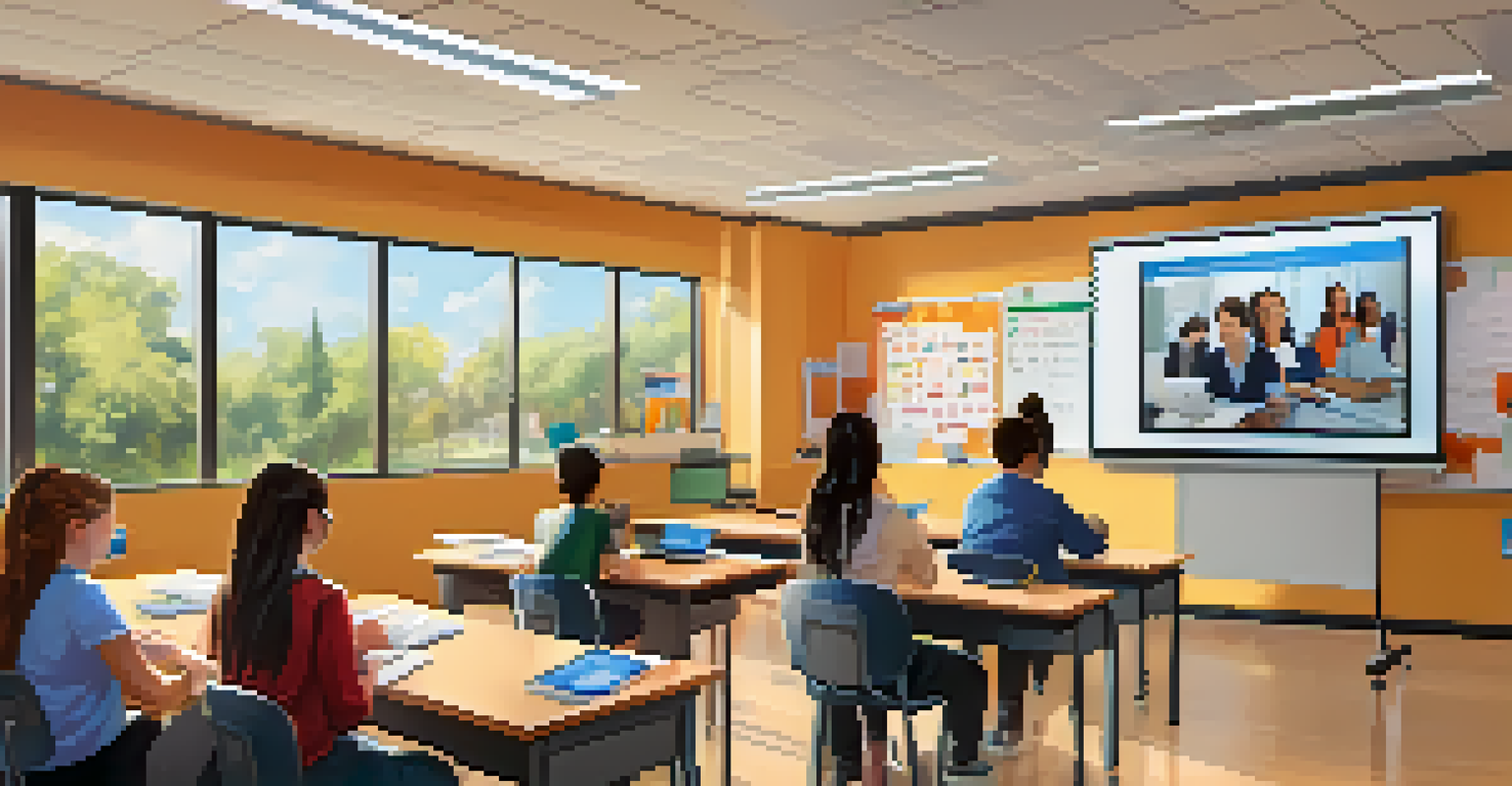Global Education Initiatives: Lessons from the Pandemic

The Shift to Remote Learning: A Global Challenge
When the pandemic hit, schools worldwide faced an unprecedented shift to online education. Teachers, students, and parents were suddenly thrust into a virtual classroom environment, often without the necessary resources or training. This rapid transition highlighted significant disparities in access to technology, especially in underserved communities.
Education is the most powerful weapon which you can use to change the world.
As a result, many educational institutions had to innovate quickly, finding creative solutions to ensure learning continued. For instance, some schools utilized local radio and television broadcasts to reach students without reliable internet access. This situation underscored the importance of adaptability and highlighted the need for robust infrastructure in education.
In the face of these challenges, the collective resilience of educators and students was remarkable. Many teachers embraced new digital tools and platforms, resulting in a more dynamic and interactive learning experience. This shift not only changed how education is delivered but also sparked conversations about the future of schooling in a post-pandemic world.
Equity in Education: Bridging the Digital Divide
The pandemic exposed glaring inequalities in education, particularly the digital divide that exists between students with access to technology and those without. Many children found themselves unable to participate in online learning due to a lack of devices or reliable internet connections. This situation raised urgent questions about educational equity and the need for systemic change.

In response, various global initiatives emerged to bridge this gap. Governments, NGOs, and private organizations collaborated to distribute devices and provide internet access to underserved communities. Programs that offered training for both students and parents on using digital tools became essential in ensuring that all students could benefit from remote learning.
Impact of Remote Learning Shift
The sudden transition to online education during the pandemic revealed significant inequalities in access to technology and resources.
These efforts highlighted the importance of prioritizing equity in education moving forward. As we emerge from the pandemic, it’s crucial to continue addressing these disparities to create a more inclusive educational landscape, ensuring that all students have the tools they need to succeed.
Innovative Teaching Methods: Lessons Learned
The pandemic forced educators to rethink their teaching methods, leading to a wave of innovation in the classroom. Teachers began to incorporate more interactive and engaging techniques, utilizing technology to enhance learning experiences. For instance, gamification became a popular strategy to keep students motivated and invested in their education.
The only way to make sense out of change is to plunge into it, move with it, and join the dance.
Additionally, this period encouraged educators to embrace a more student-centered approach. Rather than relying solely on traditional lectures, teachers started to facilitate discussions and encourage collaboration among students. This shift not only made learning more relevant but also fostered critical thinking and problem-solving skills.
Ultimately, these innovative teaching methods are likely to have a lasting impact on education. As schools return to in-person learning, many educators are eager to integrate these new strategies, blending the best of both worlds to create a richer learning environment.
Social-Emotional Learning: Prioritizing Well-being
The pandemic took a toll on students' mental health, making social-emotional learning (SEL) a crucial focus in education. Educators recognized the importance of supporting students not just academically, but emotionally as well. Schools began implementing programs that fostered resilience, empathy, and emotional regulation among students.
Through activities like mindfulness exercises and peer support groups, educators aimed to create a safe space for students to express their feelings. This proactive approach helped students navigate the challenges of isolation and uncertainty brought on by the pandemic. It also highlighted the vital role that emotional intelligence plays in overall success.
Importance of Social-Emotional Learning
Prioritizing students' mental health through social-emotional learning became crucial as educators aimed to support their emotional well-being.
As we look to the future, incorporating SEL into curricula will be essential. By prioritizing students’ mental health, schools can create a more supportive environment that encourages not only academic achievement but also personal growth.
Global Collaboration: Strengthening Educational Networks
The pandemic underscored the need for global collaboration in education, as countries shared strategies and resources to navigate the crisis. Educational leaders from various nations connected to exchange ideas on best practices for remote learning and student engagement. This spirit of cooperation fostered a sense of solidarity among educators worldwide.
Initiatives like virtual conferences and online forums became platforms for sharing insights and experiences. Such collaborations not only enriched the teaching community but also highlighted the importance of learning from one another in times of crisis. This exchange of knowledge proved invaluable as schools faced similar challenges across borders.
Looking ahead, maintaining these global networks will be critical for future educational innovation. By continuing to collaborate, educators can collectively address challenges and ensure that lessons learned during the pandemic lead to lasting improvements in education systems worldwide.
The Role of Parents: Active Participants in Education
During the pandemic, parents became more involved in their children's education than ever before. With remote learning taking center stage, many parents found themselves juggling work and overseeing their children’s schoolwork. This shift highlighted the importance of parental engagement in the educational process.
As parents became more familiar with the curriculum and learning tools, they discovered new ways to support their children’s education. From organizing study groups to setting up dedicated learning spaces at home, parents played a crucial role in creating a conducive learning environment. This increased involvement also fostered stronger connections between parents and teachers.
Rise of Hybrid Learning Models
The pandemic has led to the exploration of hybrid learning models that combine in-person and online instruction to better cater to diverse student needs.
As we move forward, it's essential to recognize the value of this partnership. Schools can benefit from fostering ongoing communication and collaboration with parents, ensuring that they remain active participants in their children's learning journeys.
Future of Education: Embracing Hybrid Learning Models
The pandemic has fundamentally changed the landscape of education, paving the way for hybrid learning models that combine in-person and online instruction. This flexible approach allows for a more personalized learning experience, catering to diverse student needs and learning styles. As schools begin to reopen, many are exploring how to effectively implement this model.
Hybrid learning offers the best of both worlds, enabling students to benefit from face-to-face interaction while also enjoying the flexibility of online resources. This approach can lead to increased engagement and motivation, as students have more control over their learning experience. Additionally, it allows educators to reach a wider audience, accommodating different learning preferences.

As we embrace this new era of education, it’s crucial to continue evaluating and refining hybrid models. By leveraging the lessons learned during the pandemic, educators can create a more effective and inclusive educational system that prepares students for the challenges of the future.